For more information about this program, please contact the physics department CMP group
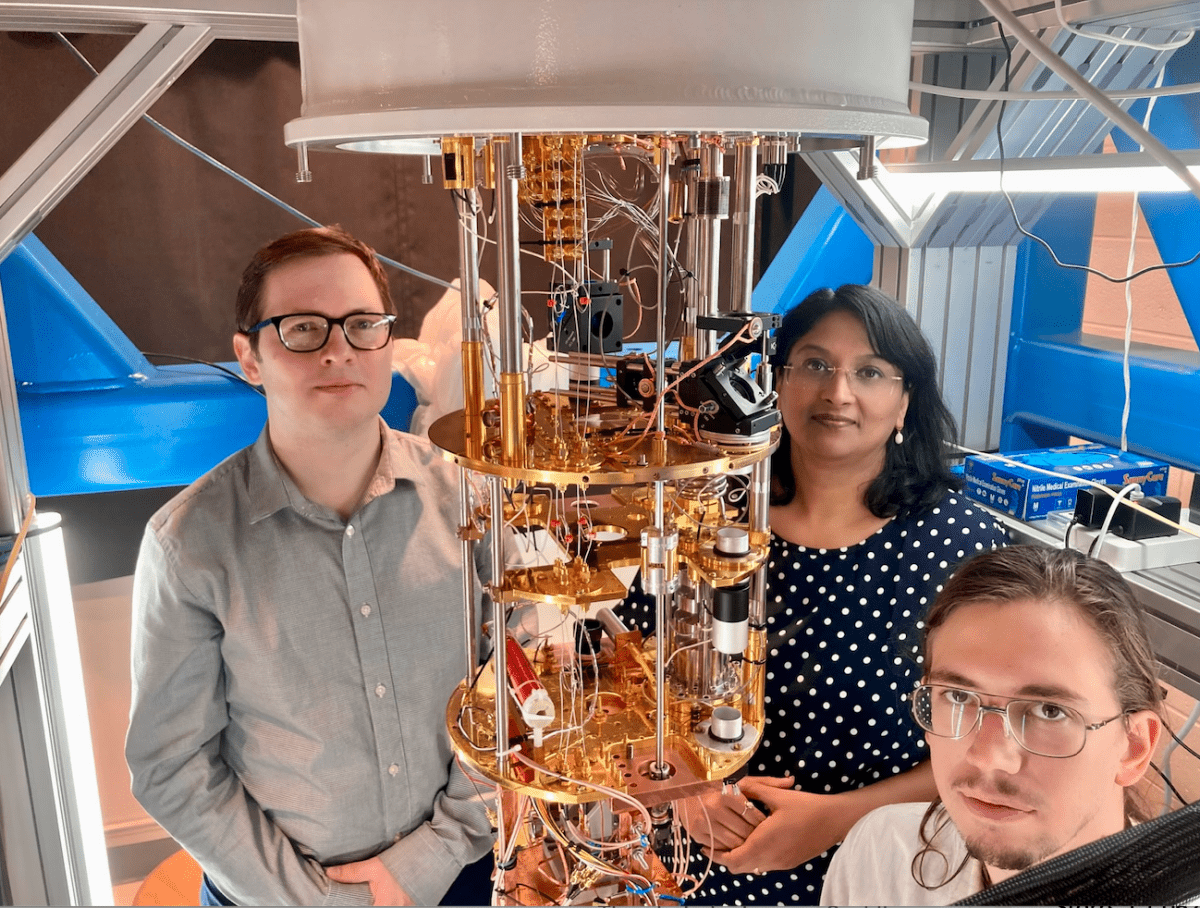
NSF award to Profs. Jain and Sochnikov
Professors Jain and Sochnikov received NSF research grant entitled “New Quantum Elastocaloric Demagnetization Refrigeration for the Millikelvin Range”. A major focus of their research will be the cooling of quantum chips. For this purpose, their teams will study ‘spin liquids’, which can be harnessed to achieve millikelvin temperatures without magnetic fields. At such low temperatures, […]
[Read More]
Prof. Jain is organizing International Workshop on Oxide Electronics
Associate Professor of Physics Menka Jain and the Institute of Materials Science is co-organizing a workshop-28th International Workshop on Oxide Electronics (IWOE) in Maine next month. The IWOE series has become an important venue to discuss recent advances and emerging trends in this developing field. The aim of the workshop is to provide an interdisciplinary […]
[Read More]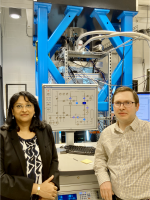
Two Physicists are in Project Daedalus that Focuses on Materials for Aerospace in New $4.7 Million Contract
UConn’s collaboration with the Department of Defense Air Force Research Laboratory (AFRL) is launching a new project. It is titled Multiscale Modeling and Characterization of Metamaterials, Functional Ceramics and Photonics. This is a $4.7 M contract with $1M for Physics. The project’s goal is to explore and advance the understanding of electronic, photonic, magnetic, and […]
[Read More]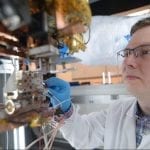
Stretching Makes Superconductor
Most superconductors only work when they’re super cold. Chemists and metallurgists have experimented with different combinations of elements for years, trying to get superconductors that work at temperatures close to room temperature. Sochnikov and his students are thinking about it differently. What if mechanical changes such as squeezing or stretching could make a material a superconductor?
[Read More]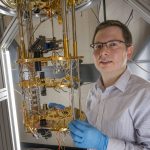
Breaking Up is Hard To Do (for Electrons in High Temperature Superconductors)
Physicists used to think that superconductivity – electricity flowing without resistance or loss – was an all or nothing phenomenon. But new evidence suggests that it’s not so clear cut, at least in copper oxide superconductors. “If we understood why copper oxide is a superconductor at such high temperatures, we might be able to synthesize a better one”, says UConn physicist Ilya Sochnikov. Sochnikov and his colleagues at Rice University, Brookhaven National Lab and Yale recently figured out part of that puzzle, and they report their results in the latest issue of Nature.
[Read More]
Physics students boost interdisciplinary research in materials
PhD student Lukasz Kuna and undergraduate Hope Whitelock participate in a symposium “Mesoscopic phenomena in ceramic materials” arranged by Materials Scientist Serge Nakhmanson at the “Electronic and Advanced Materials Conference” in Orlando, Florida. Four UConn students including Tulsi Patel, Krishna Chaitanya Pitike, Lukasz Kuna and Hope Whitlock showcased their research.
[Read More]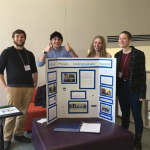
Undergraduate achievements receive wide attention
Whoever said rules were made to be broken wasn’t a physicist. When something doesn’t act the way you think it should, either the rules are wrong, or there’s new physics to be discovered. Which is exactly what UConn’s Connor Occhialini ’18 (CLAS), an honors student majoring in physics and math, found when he began researching scandium fluoride. Most materials swell as they heat up. Scandium fluoride must be doing something else, reasoned Occhialini. […]
[Read More]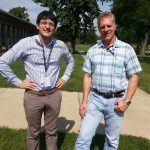
Physics student John Mangeri wins prestigious fellowship
John Mangeri’s Award Lands Him in Argonne National Laboratory John Mangeri (left) with his SCGSR-award host Dr. Olle Heinonen (right) in front of the Chemistry building (bldg. 200) at Argonne National Laboratory. (Photo credit to Dr. Andrea Jokisaari) By Katherine Eastman John Mangeri, a Ph.D. candidate in Dr. Serge Nakhmanson’s “Complex Materials by Computational Design” […]
[Read More]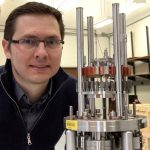
Prof. Sochnikov is a recipient of Montana Instruments Cold Science Exploration Awards
Dr. Sochnikov is a recipient of Montana Instruments Cold Science Exploration Awards Lab Startup Grant. Dr. Ilya Sochnikov has just started new scanning SQUID microscopy lab at the University of Connecticut. Ilya Sochnikov’s research focuses on nanoscale quantum phenomena in new materials. An emergence of a new phenomenon or a phase transition occurs when interactions […]
[Read More]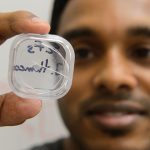
“Caution: Shrinks When Warm”
October 6, 2015 – Kim Krieger – UConn Communications Jason Hancock, Assistant Professor in Physics, with graduate students, Erin Curry and Sahan Handunkanda, have been investigating a substance that shrinks when it warms. Most materials swell when they warm, and shrink when they cool. But UConn physicist Jason Hancock has been investigating a substance that responds in reverse: […]
[Read More]
Physicists Solve Low-Temperature Magnetic Mystery
March 26, 2015 – Tim Miller Researchers have made an experimental breakthrough in explaining a rare property of an exotic magnetic material, potentially opening a path to a host of new technologies. From information storage to magnetic refrigeration, many of tomorrow’s most promising innovations rely on sophisticated magnetic materials, and this discovery opens the door to harnessing […]
[Read More]